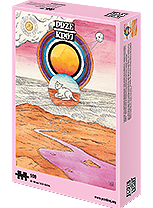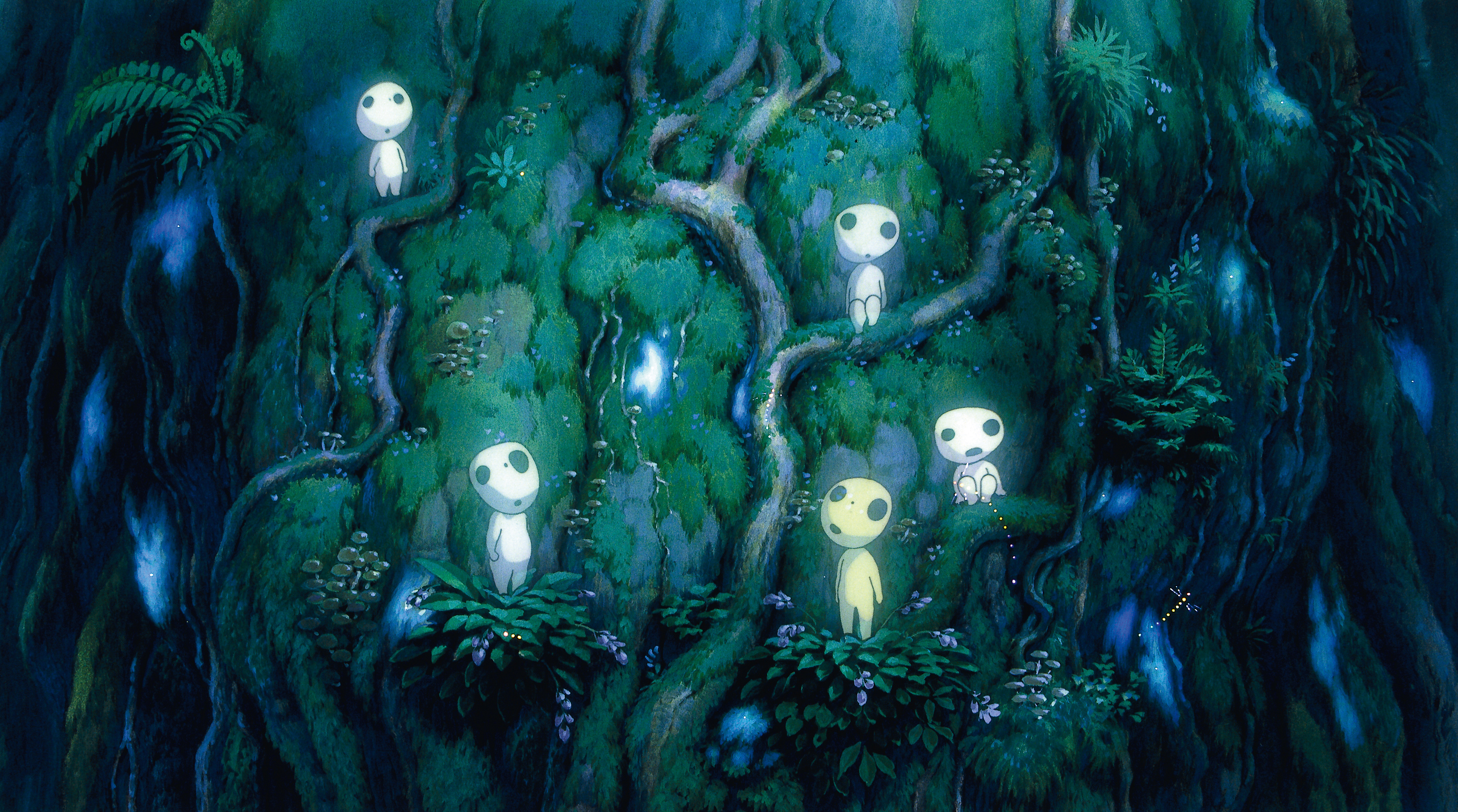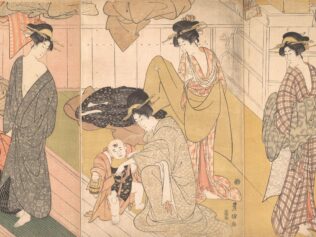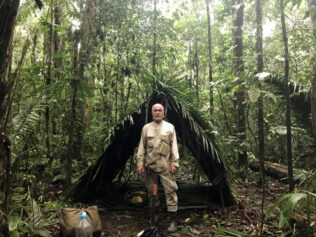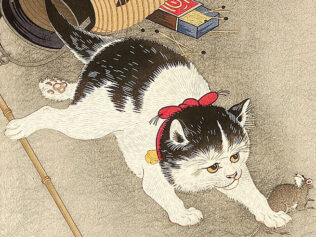
A fluffy and huggable Totoro and a wealth of other lively, cute spirits are the characters most readily associated with Studio Ghibli, the Japanese animation film studio. Yet behind this soft-power asset of commercialized icons lies a deep concern over environmental issues.
Hayao Miyazaki and Isao Takahata – the two animators who founded Studio Ghibli in 1985 – are known for having not only quite different personalities but also different ways of approaching their subjects. In her Frames of Anime, Tze-Yue G. Hu points at Takahata’s directorial debut, The Great Adventure of Horus, Prince of the Sun (1968), as the film where their interest in the themes of ecology and community living first manifested. Later on, these same themes started to ooze from many other titles in both Miyazaki’s and Takahata’s filmographies. Their environmental sensibilities are also enriched by their different modes of storytelling. Whereas Miyazaki often pitches his concerns against fantastical worlds (although ripe with historical influences and a mash-up aesthetic combining the West and East) and leaves the endings of his films open to interpretation, Takahata seems to have a predilection for stories rooted in realism and mostly carrying a more direct message.
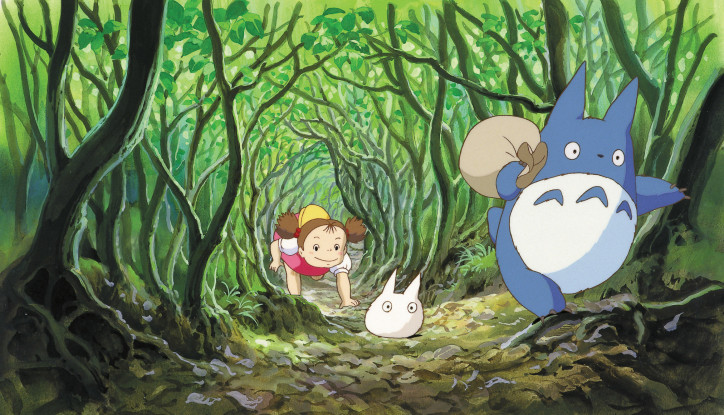
So where did this concern about the environment originate from? An easy answer would promptly marry Miyazaki’s ecological sensibility with the Japanese religion of Shinto, which still plays an important role in Ghibli films. Essentially animistic, Shinto looks at living things as if they are imbued with sentience, hence prompting reverence towards nature. In such a spiritual ecosystem, the kodama – the timid and playful spirits living in the trees – of Princess Mononoke (1997) together with all the other pacific spirits that inhabit Ghibli films (including perhaps the most well-known – the studio’s logo, Totoro), find their raison d’être. Yet Miyazaki notes in his Starting Point: 1979-1996 that he never made religion a basis for his films, choosing instead to remain as true as possible to his own beliefs. In this way, his films can embrace apocalyptic – and post-apocalyptic – narratives, which is a vision not commonly shared by traditional Japanese culture, nor, as Susan Napier suggests, a resolution that either traditional Buddhism or Shintoism envision. As a result, what fuels Miyazaki’s films is the idea that, somewhere along our history, humans disconnected from nature and began plundering it mercilessly.
I’ve come to a point where I just can’t make a movie without addressing the problem of humanity as part of an ecosystem – Hayao Miyazaki, interview with “Asia Pulse”, 16th May 1997
Three of Miyazaki’s most prominent titles – Nausicaä of the Valley of the Wind (1984), Castle in the Sky (1986) and Princess Mononoke – take this idea and plant it in complex apocalyptic or post-apocalyptic stories, which are inspired both by natural and human disasters, and by traumatic events of recent Japanese history. Nausicaä is a perfect example of where such events shape its post-apocalyptic landscape. From 1932 to 1968, the Chisso Corporation released industrial wastewater from a chemical factory into Minamata Bay. This wastewater contained methylmercury, which bio-accumulated in fish and shellfish, entering the human food chain and causing neurological damage in over 10,000 people, later dubbed ‘Minamata disease’. This incident – one of Japan’s so-called four big pollution diseases – has been listed by Miyazaki as the inspiration for his manga, which he later adapted into the film. Indeed, it’s not difficult to see in Nausicaä’s Sea of Decay a land similarly wounded by human selfishness. Shigemi Inaga and Gwendolyn Morgan also see in the manga and film’s geography a devastation mirroring that which resulted from the nuclear radiation that spread following the war-time atomic bombing of Hiroshima and Nagasaki by the US. However, in the world of Nausicaä, nature somehow managed to adapt to the newly compromised ecosystem, creating the vast Toxic Jungle where humans cannot survive without wearing a mask, but where giant trilobite-like insects – the Ohmu – and enormous plants thrive. Framed by this unwelcoming landscape, Nausicaä, the princess of the Valley of the Wind, leads a peaceful life within her village until her path crosses with Princess Kushana’s – leader of the army of the neighbouring power, Tolmekia – leading to another excruciating conflict sparked by Kushana’s desire to destroy the Sea of Decay and reclaim the land.
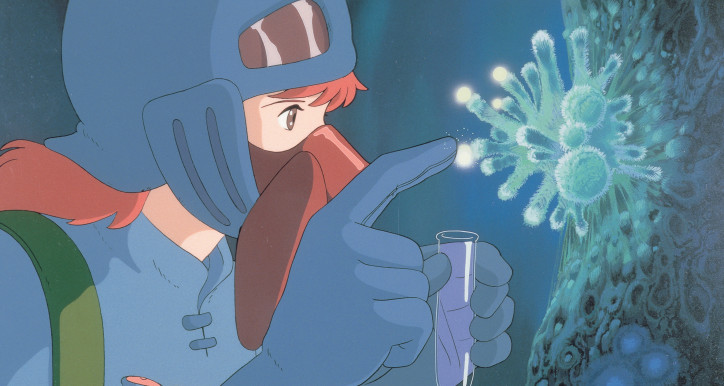
The beheaded Forest Spirit in Princess Mononoke indexes a sense of impending doom and punishment similar to the one carried by the Giant Warrior deployed by the Tolmekian army near the end of Nausicaä. This spirit also signals a decisive fracture in the unbalanced relationship between humans and nature. In Princess Mononoke, destruction is present from the very beginning, notes Morgan, “starting with the bullet that rips through the boar god, changing him into a beast intent on destroying mankind.” Set in the rather codified world of the Japanese Muromachi period, Princess Mononoke is a complex film weaving its jidaigeki (period drama) veneer with fantastical threads regulated by the teachings of Shinto. A sudden attack on his village prompts the prince Ashitaka to leave his people to seek a cure for a curse that has befallen him. In his quest, he strands to Lady Eboshi’s Iron Town before having a close encounter with San, a human girl raised by the wolf god Moro. As Eboshi and San are natural enemies, hence destined to continually fight against each other, the politics of land control and power exacerbate their feud, which results in alarming consequences for the people and the land.
If the disconnect between humans and nature feels strongly broadcast in Nausicaä’s post-apocalyptic setting and Princess Mononoke’s literal invocation of animal spirits fighting human industrialists, Miyazaki’s third film deals with ecological problems in a more subtle way. Castle in the Sky revolves around protagonist Sheeta and her mysterious blue crystal pendant. After escaping the clutches of government agent Colonel Muska, Sheeta lands in a small mining town where she meets Pazu, a boy obsessed with a mysterious floating island called Laputa. Forced to leave the town, Pazu and Sheeta join forces with a rowdy but good-natured gang of air pirates. It is soon revealed that Sheeta is heir to the now dead Laputa civilization. Named after the flying island described in Jonathan Swift’s Gulliver’s Travels, the inhabitants of Laputa relied heavily on technology, thereby neglecting their relationship with nature. No matter the tragic destiny that the Laputans encountered because of their own shortcomings, Anthony Lioi sees the flying island as a critical ecotopia in that it “embodies the contradictory nature of modernity as a utopian political project that advances through a high technology of empire.” His interpretation is echoed by Akimoto Daisuke, who also discusses the influences of nuclear technology in the film, likening the ‘thunder of Laputa’ – essentially an advanced weapon of a mass destruction developed by the Laputans – to a nuclear weapon test and reading the climactic Spell of Destruction as an analogy of nuclear abolition.
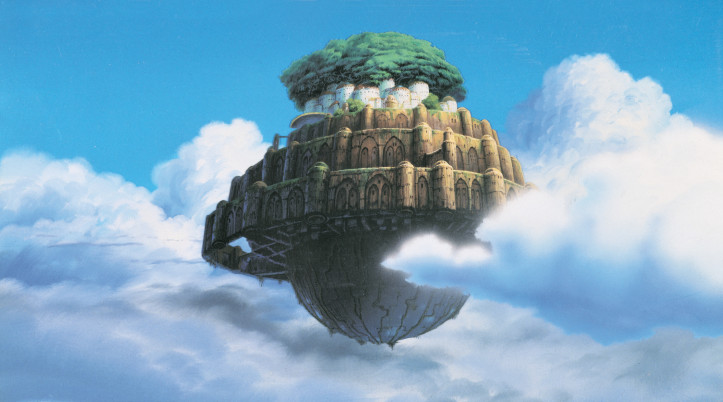
The aforementioned films can be characterized by Miyazaki’s encapsulation of the morally ambiguous conflict between man’s unrelenting economic growth and nature’s self-preservation instinct. To represent this balance, Miyazaki refuses a Manichean classification between good and evil – which is indeed altogether meaningless in the ecological discourse – turning instead to characters flawed as a result of being human. Kushana and Eboshi – the respective antagonists of Nausicaä and Princess Mononoke – are both empowered women in charge of male soldiers and also mother figures. Interestingly though, such figures have an adversarial relationship with nature, argue Michelle J. Smith and Elisabeth Parson, as well as being opposed to the green activist types embodied by younger girls – Nausicaä and San in their respective cases. In Nausicaä, Kushana’s hatred towards the Ohmu is rooted in a childhood trauma; an Ohmu attacked her, severing her arm and her two legs, which were substituted with prosthetic limbs. In light of this, her hunger for revenge is understandable, although her means cannot be excused. Similarly, Princess Mononoke’s Eboshi reigns over an enclosed town, populated by former prostitutes and lepers, and repeatedly tramples on the surrounding nature, clear-cutting the forest and killing animal spirits to ensure that her people can thrive. Hers is the boastful and selfish attitude of the philanthropic governor, who helps the outcasts yet favours blind technological progress. Yet she also embodies the enlightened leader who learns from her mistakes and eventually vows to embrace a more sustainable way of life.
Amid the fantasy landscapes and steampunk spectacles depicted by Miyazaki exist the equally environmentally-conscious films of Isao Takahata. Released immediately before the burst of Japan’s economic bubble (between late 1991 and early 1992) that led the country into stagnation, Only Yesterday (1991) paints a vivid painting of rural Japan as a viable and refreshing alternative to bustling city life. Setting the scene in the early 1980s, the film follows Taeko, a young woman who grew up in Tokyo and has hardly ever been to the countryside. Unmarried but with a solid company job, when summer strikes, Taeko leaves for a short trip to help with the safflower harvest in a village of the Yamagata Prefecture. Here, she immerses herself in manual labour, finding joy in the placid but physically demanding rhythms of farming. Unfolding in all its bucolic glory, Only Yesterday reaches its climax when it reveals to the naive city-dweller – via the young farmer, ex sarariman [or ‘salaryman’, the Japanese word for a male white-collar worker who is exceptionally dedicated to his corporate job – ed. note] Toshio – how much of the surrounding scenery she marvels at is actually man-made. Farmers planted trees and shaped the intricate geography of rice paddies and water streams. Nature might be battled, Toshio points out, and its fruits collected by mankind, but as long as they evolve together, both farmers and nature can perfectly co-exist. A truly nostalgic film in its own right, Only Yesterday celebrates a mode of sustainable stewardship that is progressively disappearing, claims Roger W. Hecht, while at the same time saluting harmonious coexistence with nature promoted by Shinto beliefs and practices.
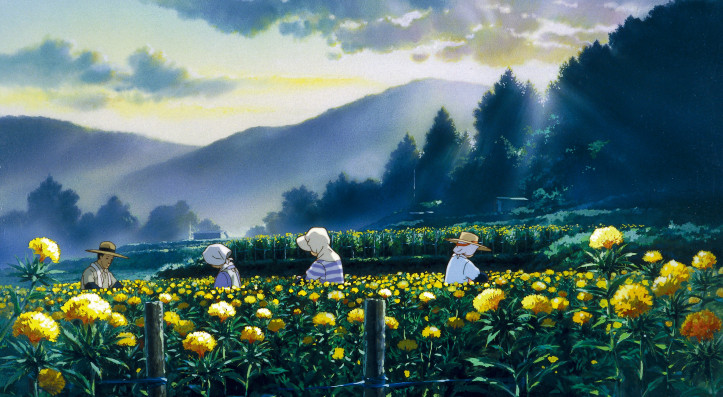
A less optimistic reflection on the precarious relationship between humans and nature is explored in the bonkers and absurdist Pom Poko (1994). Riffing on Japanese folklore that features stories of tanuki (aka raccoon dogs) as highly sociable yet mischievous shape-shifters, the film mostly pitches urban settings against the rural outskirts of the capital, which are sacrificed to industrial expansion. The tanuki of this story populate Tama Hills, an area that stretches from southwest Tokyo to northeast Kanagawa. They live in peace until a new, suburban development project threatens their home – echoing the real-life expansion of the Tokyo and Yokohama suburbs into this area since the 1950s. Soon, divisions soar in their group; some tanuki decide to engage violently with humans, while others privilege a softer and more diplomatic approach. Unlike other Ghibli titles that depict fantastical worlds, Pom Poko is soaked in magical realism, bringing the studio’s environmental preoccupation down to a more grounded level. Among the most touching scenes in the film are the ones where the tanuki reminisce of a much greener past – visually similar to the rice paddy fields of Only Yesterday, or the pristine and bucolic forests of My Neighbour Totoro (1988) – and contemplate the impracticality of their victory against humans, hence abandoning the practice of eco-terrorism in favour of adaptation. Running deep throughout the narrative is also a desolate sense of nostalgia akin to the one described in Only Yesterday, alongside a sense of coming to terms with the definite fracture that urban development has brought to Japan’s farming roots.
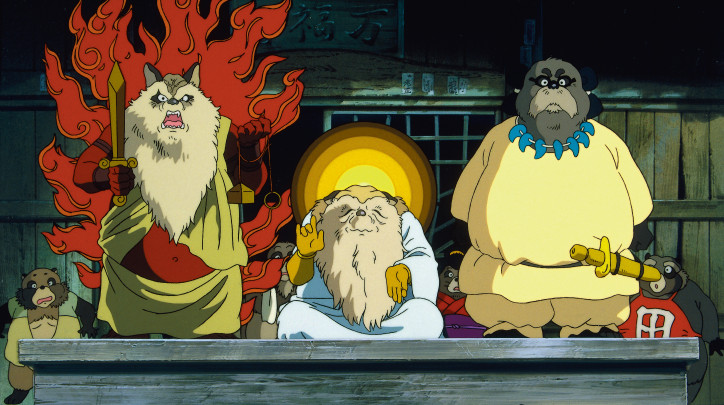
As the current, exacerbated climate crisis finally starts to make global headlines, Studio Ghibli has long advised us of the righteous and more sustainable route we might have followed. Yet, there is only so much cinema can do to educate people to lead more eco-conscious lifestyles. There is an onus on individual governments to carry the beacon of change so – after facing many natural and environmental crises – it’s encouraging to see Japan finally taking sustainability more seriously. As well as pledging a commitment to eliminate carbon emissions by 2050, prime minister Shinzo Abe has also stressed that environmentalism should no longer be perceived as an obstacle hindering economic growth. Nonetheless, as a planet we are still a long way from achieving satisfying results in slowing down the ecological downfall we are facing. We need only look at Japan’s slow response in tackling its own issues of plastic waste management or its reliance on coal after the Fukushima nuclear disaster to recognize this.
The films of Studio Ghibli may have started to pave the road to a more conscious way of life, but they also show us how implacable nature can be when man’s damages exceed any reasonable limit. After Eboshi, brimming with hubris, decapitates the Forest Spirit at the end of Princess Mononoke, its blood surges to the sky and a vengeful incarnation of the nightwalker is formed. Embodying nature in its most primaeval form, this nightwalker is like a shinigami, an impartial soul-reaper extracting the life out of every living being in its quest to restore balance. Angered and frustrated, nature repeatedly reminds us that it can not only bounce back – it can also bite until humans understand once again their place on Earth.
All of the above films – as well as most of Studio Ghibli’s back catalogue – are currently available to stream on Netflix across all regions (excluding the US, Canada and Japan).
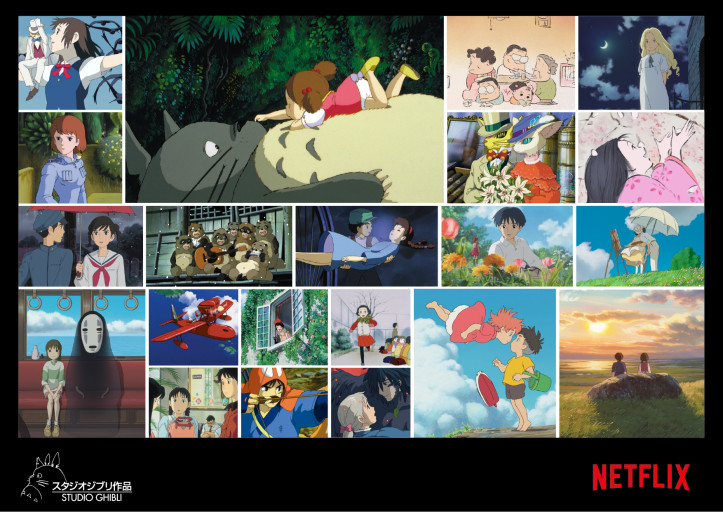
In writing this article, I used the following resources:
Daisuke Akimoto, “Laputa: Castle in the Sky in the Cold War: As a Symbol of Nuclear Technology of the Lost Civilization”, 2014, Electronic Journal of Contemporary Japanese Studies (EJCJS), 14(2)
Tze-Yue G. Hu, Frames of Anime: Culture and Image-Building, 2010, Hong Kong University Press, Hong Kong
Shigemi Inaga, “Miyazaki Hayao’s Epic Comic Series: Nausicaä of the Valley of the Wind; An Attempt at Interpretation”, 1999, Japan Review, 11
Anthony Lioi, “The City Ascends: Laputa: Castle in the Sky as Critical Ecotopia”, ImageTexT: Interdisciplinary Comics Studies, 5(2)
Hayao Miyazaki, Starting Point: 1979-1996, 1996, Viz Media, San Francisco
Gwendolyn Morgan, “Creatures in Crisis: Apocalyptic Environmental Visions in Miyazaki’s Nausicaä of the Valley of the Wind and Princess Mononoke”, 2015, Resilience: a Journal of the Environmental Humanities, 2(3)
Susan Napier, Anime from Akira to Princess Mononoke, 2001, Palgrave, New York

